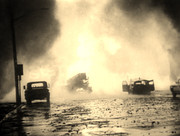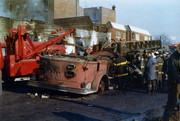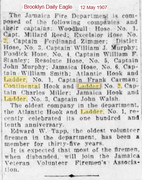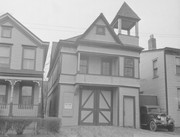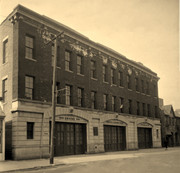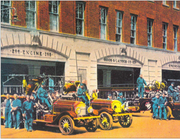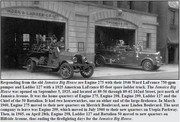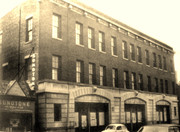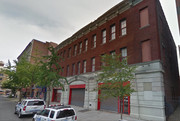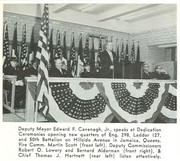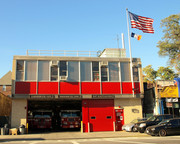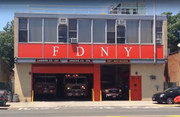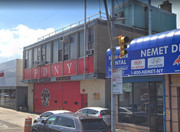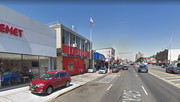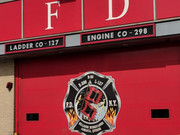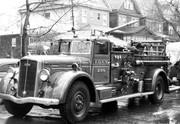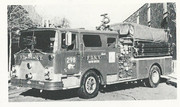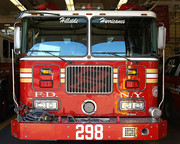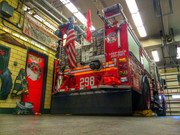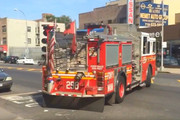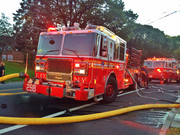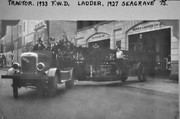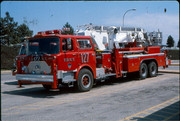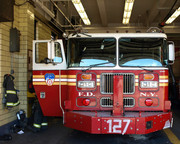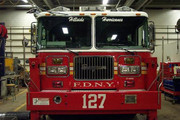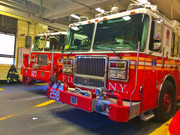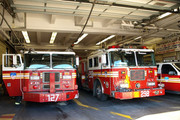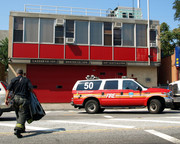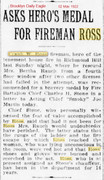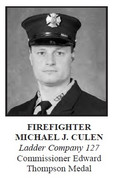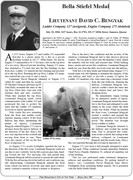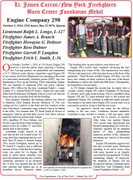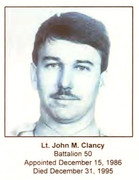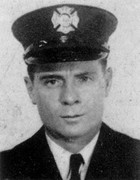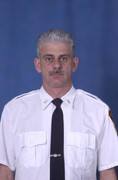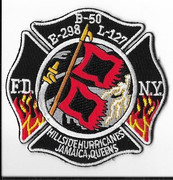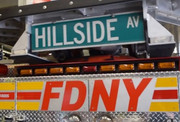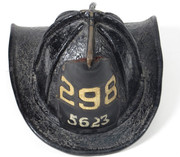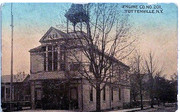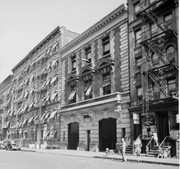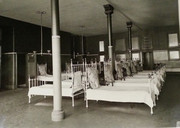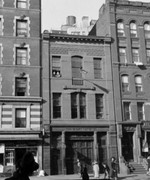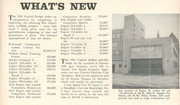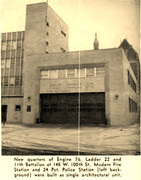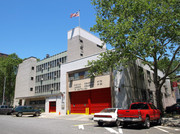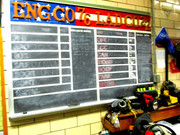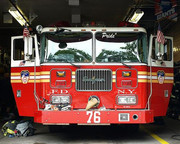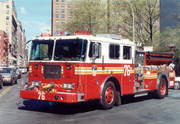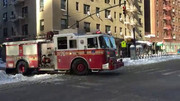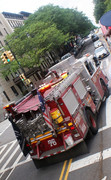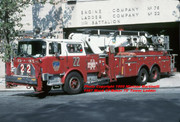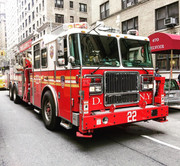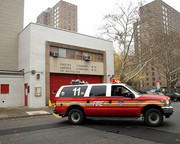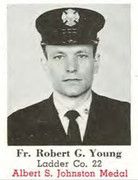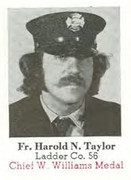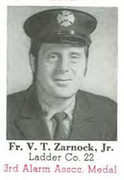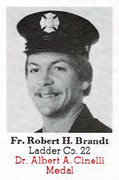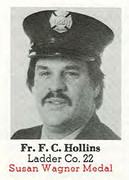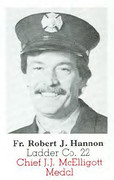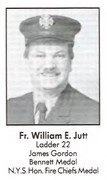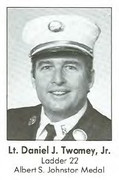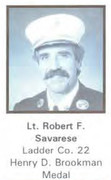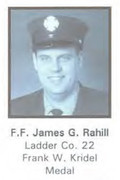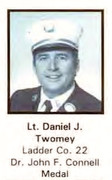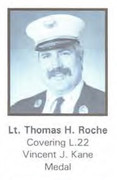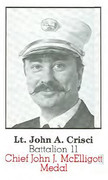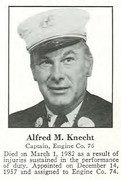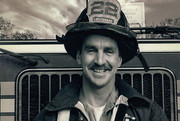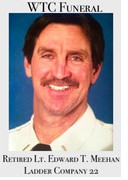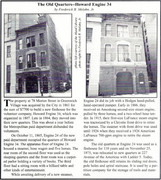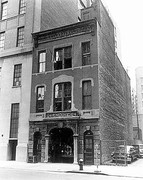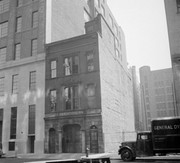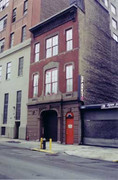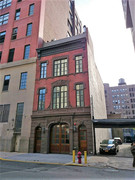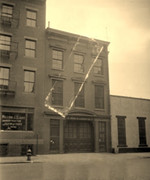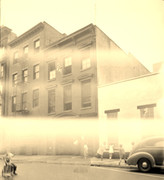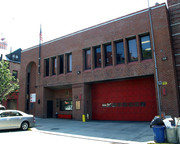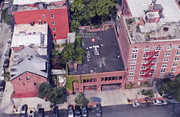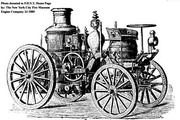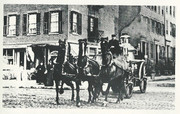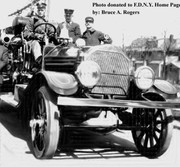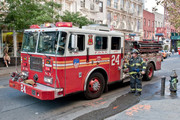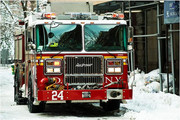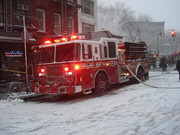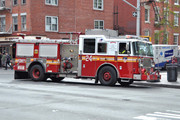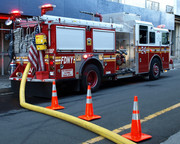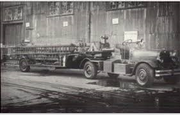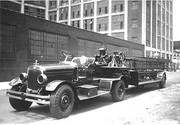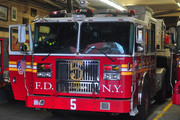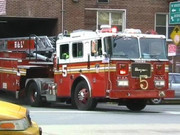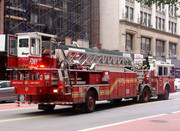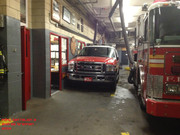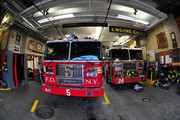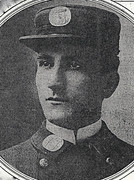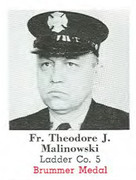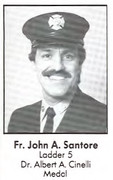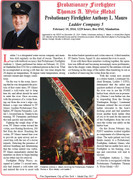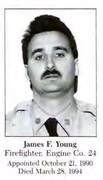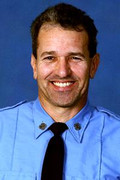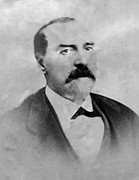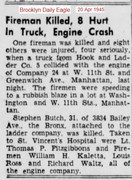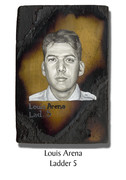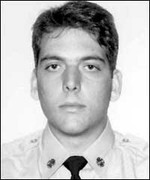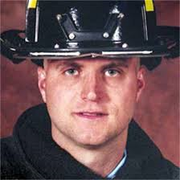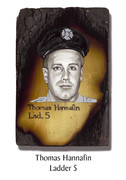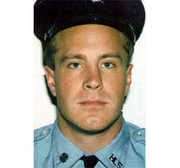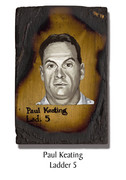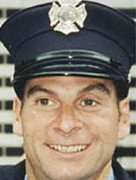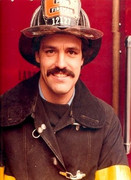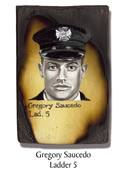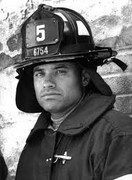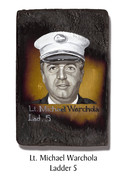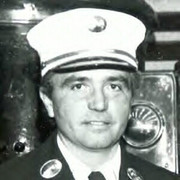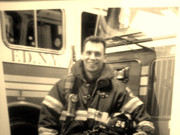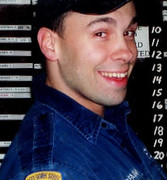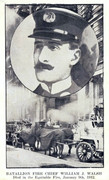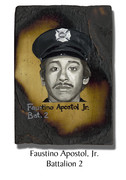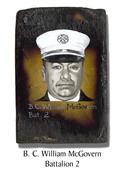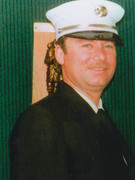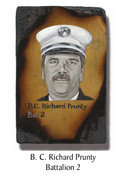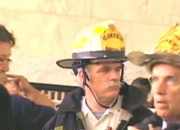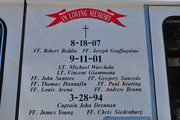Engine 298/Ladder 127/Battalion 50 (continued)
Jamaica Gas Leak and Explosion 1967:
https://www.gettyimages.com/detail/video/early-morning-gas-main-explosion-in-queens-houses-and-news-footage/454006694
FIRE ENGINEERING New York's 13-Alarm Night of Flame 04/01/1967 By DICK SYLVIA
Master streams used to combat radiant heat in
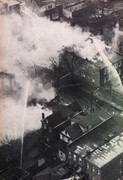
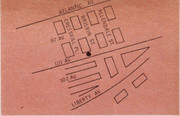
A gas main leak that sent a 20-footwide column of flame 150 feet above the street resulted in a 13-alarm fire that destroyed five buildings and damaged 15 others in the Jamaica section of New York City.
The first task of rousing hundreds of sleeping residents and removing them from their homes saw the margin between life and death narrowed to a fragile line when the escaping gas burst into flame. This produced the second problem?radiant heat.
The beginning of what the fire department was to call ?a major disaster? became evident when Mrs. Rose Padimha of 139-19 101st Avenue awoke in her second-story bedroom at 5:10 a.m. last January 13?a Friday. She dialed the telephone operator, who relayed her report of smelling gas to the police. The two policemen in the patrol car that was sent to investigate transmitted a fire alarm?box 4758?upon their arrival and began to get occupants out of their homes.
Record for alarms
Within 48 minutes after the first alarm at 5:19 a.m., the 10th alarm was struck for box 4758. And 50 minutes later, at 6:57 a.m., the 13th alarm was transmitted?the largest number of alarms in the history of the New York Fire Department.
?The last three alarms were merely precautionary to insure an adequate water supply,? Chief of Department John T. O?Hagan explained.
The first apparatus arriving on the first alarm. Engine 298 and Ladder 127, stalled on 101st Avenue as they reached Brisbin Street.
It is believed that so much gas was escaping from a drip pot on a natural gas main 10 feet west of Brisbin Street that there was not enough oxygen in the atmosphere for the apparatus engines. Engine 298 stopped within a few feet of the drip pot, and Ladder 127 halted about 60 feet farther back.
The officers of the two units ordered their men to clear the nearby homes of occupants.
At this time, Battalion Chief Robert E. Fay arrived. After being informed of the situation by the company officers, lie ordered them to continue evacuating the area, and he immediately asked the dispatcher for a second-alarm assignment to hasten the evacuation. He also asked for more police and a repeat request for a Brooklyn Union Gas Company emergency crew. The second alarm was transmitted at 5:31 a.m.
Tower of flame
Slightly less than five minutes later, the escaping gas became ?a vertical column of flame about 150 feet high and 20 feet wide,? as Fay described the ignition. Men in the second-a'arm companies approaching the area saw the torch erupt in the blackness of the night. So did Deputy Chief Joseph Weinhofer, Jr., of the 13th Division, who transmitted a third alarm at 5:36 a.m. while still en route.
The source of ignition ?was problematical,? according to O?Hagan. A commercial truck went through the area, and while a vehicle ignition system might have lighted off the gas, it could have been a number of other things, the chief explained.
The 24-inch natural gas distribution main under 101st Avenue bad a drip pot just west of Brisbin Street that was designed to trap moisture in the years when the main was used for manufactured gas. Atop the drip pot was a 26-inch-diameter iron cover weighing 285 pounds. This cover was caulked and sealed with lead. Over it was 10⅝ inches of earth. The gas in the main, at 11? psi, exerted a tremendous force on the cover. Somehow, the cover was unseated so that it was at a 30-degree angle and a third of it was off the top of the drip pot, allowing the gas to break through the street, O?Hagan explained.
This was the situation as the gas was ignited while the first-alarm assignment of three engine and two ladder companies were getting people out of homes on 101st Avenue, Brisbin and Allendale Streets, and Cresskill Place.
Radiation Trouble
As the gas torched skyward, radiant heat on exposures became the dominant problem as building after building caught fire. The homes were mostly detached, two-story, wood frame construction, generally 20 to 25 feet wide and from 25 to 80 feet deep? mostly 45 feet deep. The lone three story, wood frame house had a neighborhood grocery store on the ground floor. It was only lightly damaged. A masonry, one-story, 100 X 100-foot paint factory at the northeast corner of 101st Avenue and Brisbin Street collapsed in flaming ruins. Ladder 127 burned in front of this building.
With a 4-7 mph wind behind it, the fire moved eastward on 101st Avenue. O'Hagan credited the brick veneer construction of a few homes with helping to contain the fire. Some of these houses, the chief commented, were remarkably well constructed. He cited a row of brick veneer homes with common walls separating them. The home nearest the fire was burned out, but the home adjoining it remained livable because the masonry party wall remained intact.
Some of the brick veneer homes became involved when exterior wood trim or wood window frames caught fire. A brick, four-story apartment house, 50 X 100 feet, on the west side of Allendale Street near 101st Avenue, was lightly damaged after fire entered through the rear windows in the top two stories.
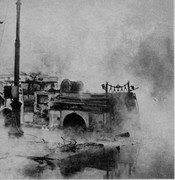


The gas problem
As the fire spread and apparatus kept rolling in, the gas flame continued to burn. Firemen dared not try to extinguish the flame for fear that unburned gas would be let loose in the area. They had to wait for the gas flow to be shut off by gas company crews, who also had the problem of limiting the shutdown of service to as small an area as possible. This was because difficulties arise when service is resumed. Then it is necessary to make certain that appliances that had been operating at the time of the shutdown are turned off and pilot lights are relighted. The wider the area, the more difficult the job and the more chances for a mishap.
As pressure in the main was reduced by utility crews, the radiation problem created by the flame began to shrink.
?Until they reduced the pressure and flame on the main, we still had that exposure problem,? O?Hagan explained. ?We weren?t sure of containing the fire until we saw that reduction taking place.?
The main was finally bagged by introducing an inflatable bag into the main some distance from each side of the drip pot and then pressurizing the bags to form barriers to further passage of gas at those points. After this was done, an excavation was made around the drip pot, and the cover was replaced.
As Chief O?Hagan was responding, he drew a diagram of the fire area on a map, using information from progress reports received by radio. Then he drew a defense perimeter: 97th Avenue on the north, Liberty Avenue on the south, Allendale Street on the east and Brisbin Street on the west.
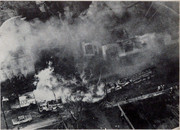
He put assistant chiefs in charge of three sides of this area and took charge of the southern line himself. The chief also ordered all companies that had not yet arrived to report to perimeter command posts.
?Unless you set up a perimeter for fire defense and put a chief in charge,? O?Hagan said, ?everybody gets confused.?
The first objective, the chief declared, was to keep the fire from jumping Allendale Street on the east. This was done by positioning two multiversals (deluge sets) on the roof of Public School 50, just east of Allendale Street on 101st Avenue. Another master stream was set up on the fourth floor of the school. Still another deluge set was placed on the roof of a brick building across the avenue from the school.
These tactics were successful. The fire did not cross Allendale Street.
Water curtains used
Meanwhile, other companies had put numerous deck pipes and deluge sets into service. Many of these were used to provide water curtains to contain the fearful production of radiant heat. Other master streams were directed on blazing buildings. In some cases, hand lines were shifted to service master stream equipment.
?The tendency in large-scale fires,? O?Hagan stated, ?is to use too many hand lines. We had to shut some down and put them into master stream equipment.?
A total of 76 lines were laid, most of them for master streams, by some 400 firemen with 70 pieces of apparatus. Ladder pipes were not used because of the speed with which the fire spread. As O?Hagan explained, it takes too long to move an aerial with a pipe working, and it was feared that more apparatus might be trapped in flame.
With the use of a multitude of master streams, water supply was a problem. The actual fire area, supplied by a private water company, had mains that were overtaxed. Therefore, many of the engines were assigned to relay pumping. A 48-inch city main at Sutphin Avenue and 101st Avenue, a long three blocks to the east, provided a large supply of water.
Big hose used
Although the Super Pumper itself was out of service at the time, the rest of the Super Pumper system?the large tractor-trailer tender and three satellites?was used to advantage with the 4&-inch hose these units carry. This hose, because of lower friction losses and big capacity, simplified the problem of getting large amounts of water to the fire.
Satellites 1 and 3 operated deck guns with 700-gpm adjustable fog nozzles, and Satellite 2 used a 2-inch tip on its deck gun for two hours on 102nd Avenue, between Brisbin and Allendale Streets. Satellite 1 was positioned on 101st Avenue, between Brisbin and Cresskill Streets, and Satellite 3 was on Brisbin Street, between 101st and 102nd Avenues.
As conditions improved, hand lines were used to extinguish fires darkened down by master streams. All structural fires were under control by 9 a.m., about three and a half hours after the first alarm. By 3 o?clock in the afternoon, the fireground complement was down to a second-alarm assignment. At this time, the signal that the overall situation was under control was transmitted.
Gas company employees then went into every house they could enter to check for leaks and unlit pilot lights. All appliances had to be checked before gas service could be restored to unburned homes affected by the cutoff of gas service.
After 6 p.m., only a reserve engine with a detail of men manning one hose line was left on the fireground. This piece remained there for four days to guard against any flareup.
Although news reports at first told of as many as 12 blocks aflame in Jamaica, the fire was contained mostly within two blocks on 101st Street, where five buildings were destroyed by flames and nine others damaged. In addition to the lightly damaged apartment house on Allendale Street, light damage also was done to two woodframe, three-story homes on Brisbin Street and three wood-frame, 2-story homes on 102nd Avenue. The master stream attack won out over the radiant heat.
Of the five fire fighters injured, two were treated for foreign bodies in their right eyes. Another fireman?s shoulder was fractured and his right hand was cut. Two others were burned on their faces. No civilians were injured despite the extent of the fire at a time when they had to be awakened.
O?Hagan estimated the replacement cost of the two pieces of apparatus and their equipment at $100,000. Seven civilian autos and trucks were damaged or destroyed by flames.
The Jamaica Gas Leak and Fire - Division 7 - August 2017:
https://www.firefighterclosecalls.com/wp-content/uploads/2017/08/August-2017-Jamaica-Gas-Leak-13-Alarms.pdf
https://www.firefighterclosecalls.com/wp-content/uploads/2017/08/August-2017-Part-2-of-3.pdf
https://www.firefighterclosecalls.com/wp-content/uploads/2017/08/August-2017-Part-3-of-3.pdf
Engine 298:
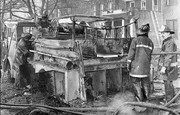
Ladder 127:
